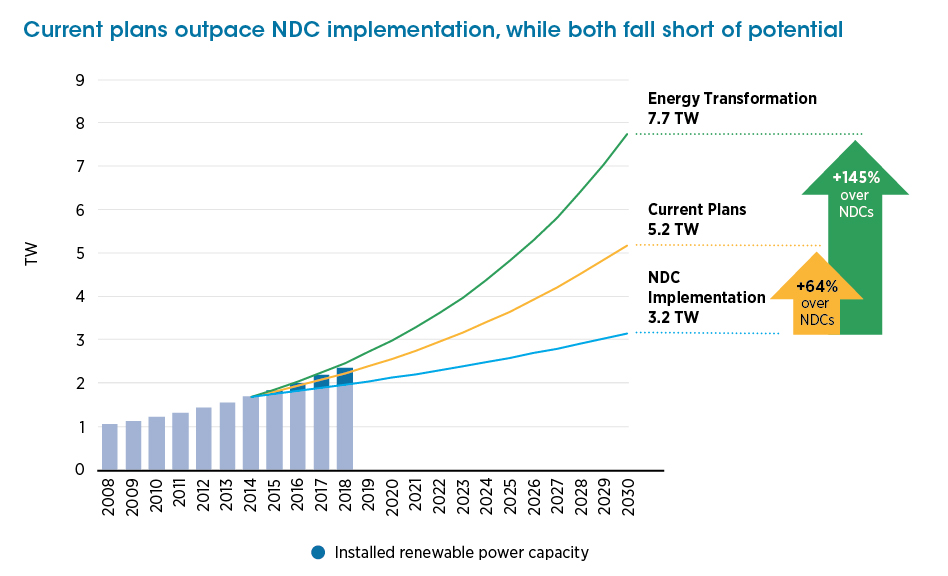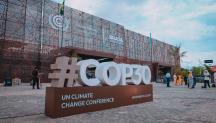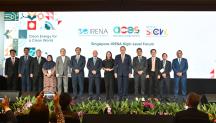

-
-
IRENA (2019), NDCs in 2020: Advancing renewables in the power sector and beyond, International Renewable Energy Agency, Abu Dhabi.
Copied
/-/media/Files/IRENA/Agency/Publication/2019/Dec/IRENA_NDCs_in_2020.pdf
Copied
NDCs in 2020
Newsletter
Countries need to be increasingly ambitious in their pledges to scale up renewables and cut energy-related carbon dioxide (CO2) emissions. The first round of Nationally Determined Contributions (NDCs) pledged under the Paris Agreement have proven inadequate to meet climate goals.
The new NDC round starting in 2020 represents an important chance to strengthen targets for renewables. This brief from the International Renewable Energy Agency (IRENA), released at the global climate meeting COP25 in late 2019, underlines the opportunity to address the climate threat, decarbonise energy use and simultaneously achieve multiple Sustainable Development Goals (SDGs).
Among the findings:
- More extensive renewable power deployment, amounting to 7.7 TW (or 3.3 times current global capacity), could be achieved cost-effectively and would bring considerable socio-economic benefits.
- Existing NDC power targets overlook 59% of the potential for renewable electricity deployment in line with the Paris Agreement by 2030, according to IRENA’s REmap analysis.
- NDC power targets even fall increasingly short of national strategies and plans. Aligning the next round of NDCs closely to those real-world targets could increase global renewable power capacity to 5.2 TW (or 2.2 times current global capacity) by 2030.
- To date, only 85 countries included unconditional renewable power pledges in their current NDCs – compared to 135 with non-NDC domestic renewable power targets (either national or sub-national).
- NDCs thus far do not reflect the actual growth of renewable power, with global capacity growing by 8.6% per year since 2015.
- Implementing current NDCs would only translate into annual capacity growth of 4% for 2015–2030, even though annual renewable power growth already averaged 5.9% in 2010–2014. With current deployment trends, the 3.2 TW foreseen in current NDC power targets for 2030 could be reached by 2022.
- Power sector decarbonisation alone will not suffice to meet Paris Agreement objectives. Rather, the entire energy sector must undergo a profound transformation through the adoption of renewables and energy efficiency measures, as well as increased electrification of end uses.





